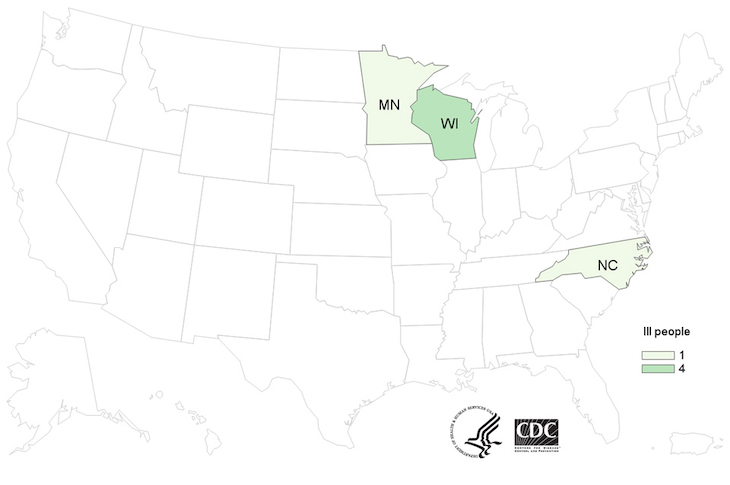The Butterball ground turkey Salmonella Schwarzengrund outbreak first reported in a USDA recall notice has sickened 6 people in 3 states, according to the Centers for Disease Control and Prevention (CDC). One person has been hospitalized. No deaths have been reported.

The patient case count by state is: Minnesota (1), North Carolina (1), and Wisconsin (4). Illnesses started on dates ranging from December 19, 2018 to February 2, 2019. The patient age range is from less than one year to 71.
Epidemiologic and laboratory evidence indicates that ground turkey produced by Butterball, LLC is the likely source of this Salmonella Schwarzengrund outbreak. Butterball recalled about 78,164 pounds of ground turkey products on March 13, 2019. The product was also sold under the Kroger and Food Lion brand names.
What’s unusual about this outbreak is that all of the recalled turkey is long past its expiration date. The sell by or freeze by dates on all of the recalled products is 07/26/2018. Officials think that some of this product is stored in freezers in consumers’ homes. Check your freezer: if you have any of this product, throw it away.
Public health officials are using the PulseNet system to find people who may be part of this outbreak. DNA fingerprinting, performed on bacteria taken from patients, is tested using pulsed-field gel electrophoresis (PFGE) and whole genome sequencing (WGS).
Testing of the pathogen has revealed that it may be resistant to streptomycin, sulfisoxazole, and tetracycline. The CDC states that “this resistance likely will not affect the choice of antibiotic used to treat most people.”
Health officials in Wisconsin collected records and unopened ground turkey packages from a resident where four of the patients live. Records indicated that the brand of turkey was Butterball. The outbreak strain of Salmonella Schwarzengrund was found in those samples.
The symptoms of Salmonella food poisoning include a mild fever, nausea, vomiting, stomach and abdominal cramps, and diarrhea that can be bloody or watery. Symptoms start about 12 to 72 hours after exposure, and the illness lasts from 4 to 7 days.




